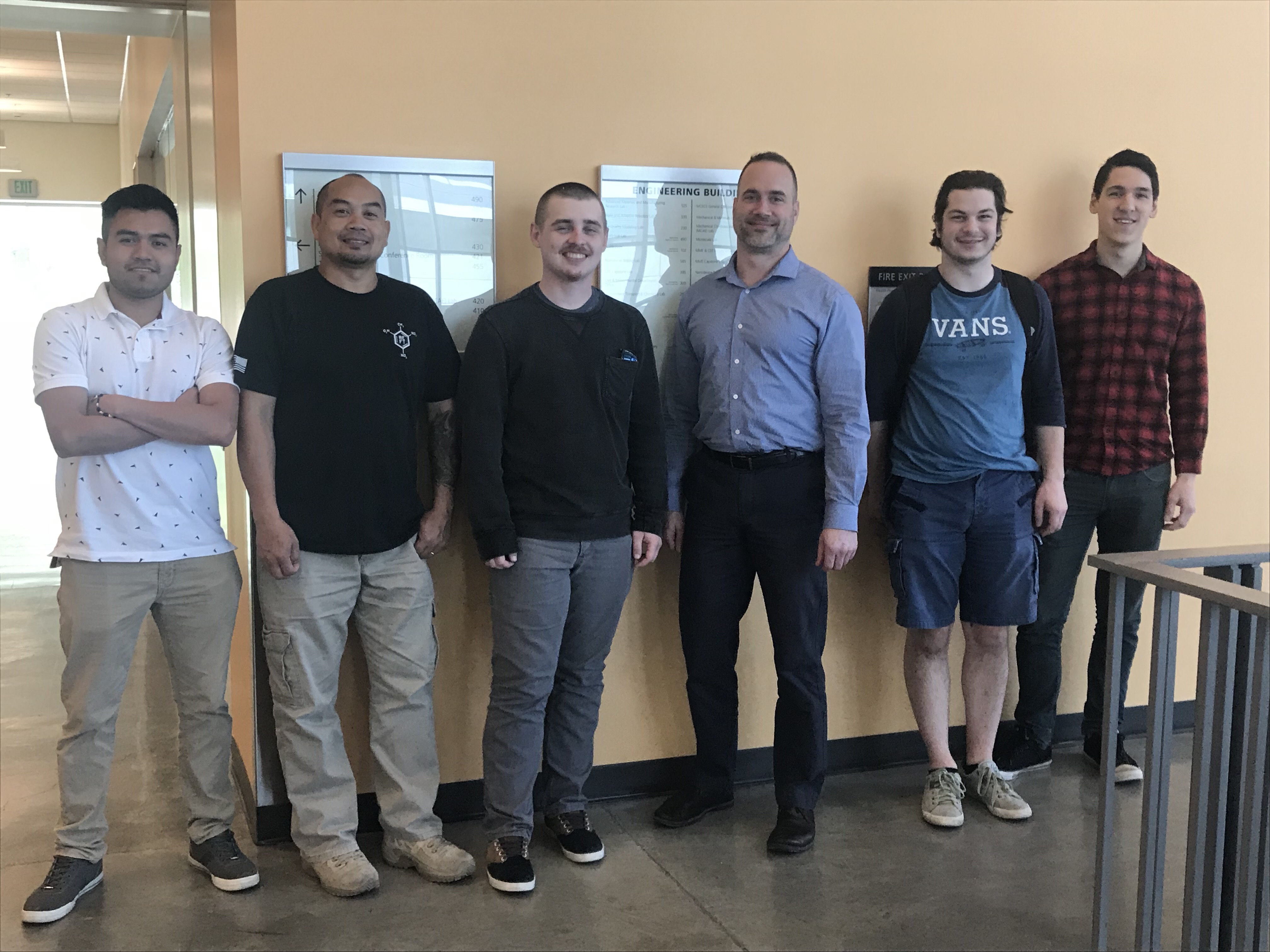Project Objective
To design and build a table to help optimize the duct flange installation process.
Team

The project team is
Customer/Market Requirements
As per our client, Streimer Sheet Metal Works INC, our team must design and fabricate an apparatus that will help optimize their flange installation process. Currently, it takes their operators 30 minutes to install a single flange onto the HVAC ducts and our client wants to reduce that time to 10 minutes per flange. The apparatus must be a stand-alone design, must be mobile, must be loadable and unloadable by hand or by forklift from all sides, and it must help ensure that the flanges are within +/– 0.5 degree from the vertical plane.
The key performance requirement is to reducing installation time while increasing productivity for the duct flange installation process. By automating areas where a majority of the time spent making adjustments will help dramatically reduce processing time and create a smoother process for their operators.
Design Challenges
The design challenges the team faced was decided how to go about accommodating for all the ground surface height changes, as this apparatus will be used both inside of their shop and out in their material yard, when they build these duct sections. Another challenge the team had trouble with was deciding how we would be able to accommodate for all the different diameter changes of duct sizes ranging from 8 to 60 inches in diameter. After reviewing the companyís current installation process, our team decided that creating a standalone processing station that was fully automated was the best direction to ensure we satisfied all of our clientís criterions.
Outcomes
The team will deliver a fully functional prototype that will be fully operational. The prototype will be fully automated in raising both table legs on one end of the workstation to ensure the ductís axis is in complete alignment with the horizontal plane. With that alignment of the ductís horizontal axis, the flange can now be mounted on each end to ensure that each flange is mounted within +/– 0.5 degrees to the vertical plane. A digital inclinometer will help ensure the flanges are within tolerance. The rollers on the workstation will be motorized to help assist in the final caulking process to further help reduce time.